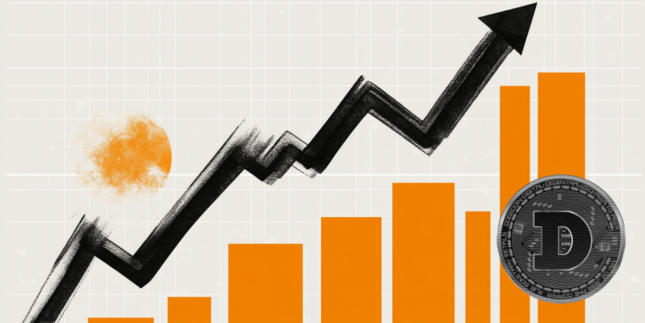- US Dollar, down 0.80% last week, now at lowest level since mid-June.
- Anticipation builds with the upcoming release of the June inflation figures and Fed talks.
- Market is pricing in less than 10% odds of a cut in July and around 80% in September.
The US Dollar continues to struggle amid signs of disinflation in the US economy, fostering confidence in a potential September rate cut from the Federal Reserve (Fed) among market participants. This week, Fed Chair Jerome Powell and other governors’ words might bail out the USD and limit the losses if they remain cautious.
Despite the trailing softness in the US indicators, Fed officials are still reluctant to embrace cuts, opting to remain data-dependent and might continue asking for patience.
Daily digest market movers: US Dollar continues soft ahead of CPI and Powell’s testimony
- Among the most noteworthy events of the week are Chairman Powell's Semiannual Monetary Policy Report to Congress, multiple Fed members speaking, and the release of inflation data for June.
- On Thursday, the headline Consumer Price Index (CPI) is expected to have dropped two ticks to 3.1% YoY, while the core figure is expected to remain steady at 3.4% YoY.
- As for now, the market predicts less than a 10% chance of a rate cut at the July 31 meeting, with the odds shooting to around 80% for September.
DXY technical outlook: DXY's struggle persists as it resides below 20-day SMA
Following the DXY's slip below the 20-day Simple Moving Average (SMA) and shrinking by 0.80% last week, the technical outlook has shifted for the worst. Both the Relative Strength Index (RSI) and the Moving Average Convergence Divergence (MACD) have slumped into negative territory.
Meanwhile, the 104.70 zone, marked by the 200-day SMA, continues to provide strong support. If the selling pressure continues, the 104.50 and 104.30 areas could potentially put a stop to further losses.
Central banks FAQs
Central Banks have a key mandate which is making sure that there is price stability in a country or region. Economies are constantly facing inflation or deflation when prices for certain goods and services are fluctuating. Constant rising prices for the same goods means inflation, constant lowered prices for the same goods means deflation. It is the task of the central bank to keep the demand in line by tweaking its policy rate. For the biggest central banks like the US Federal Reserve (Fed), the European Central Bank (ECB) or the Bank of England (BoE), the mandate is to keep inflation close to 2%.
A central bank has one important tool at its disposal to get inflation higher or lower, and that is by tweaking its benchmark policy rate, commonly known as interest rate. On pre-communicated moments, the central bank will issue a statement with its policy rate and provide additional reasoning on why it is either remaining or changing (cutting or hiking) it. Local banks will adjust their savings and lending rates accordingly, which in turn will make it either harder or easier for people to earn on their savings or for companies to take out loans and make investments in their businesses. When the central bank hikes interest rates substantially, this is called monetary tightening. When it is cutting its benchmark rate, it is called monetary easing.
A central bank is often politically independent. Members of the central bank policy board are passing through a series of panels and hearings before being appointed to a policy board seat. Each member in that board often has a certain conviction on how the central bank should control inflation and the subsequent monetary policy. Members that want a very loose monetary policy, with low rates and cheap lending, to boost the economy substantially while being content to see inflation slightly above 2%, are called ‘doves’. Members that rather want to see higher rates to reward savings and want to keep a lit on inflation at all time are called ‘hawks’ and will not rest until inflation is at or just below 2%.
Normally, there is a chairman or president who leads each meeting, needs to create a consensus between the hawks or doves and has his or her final say when it would come down to a vote split to avoid a 50-50 tie on whether the current policy should be adjusted. The chairman will deliver speeches which often can be followed live, where the current monetary stance and outlook is being communicated. A central bank will try to push forward its monetary policy without triggering violent swings in rates, equities, or its currency. All members of the central bank will channel their stance toward the markets in advance of a policy meeting event. A few days before a policy meeting takes place until the new policy has been communicated, members are forbidden to talk publicly. This is called the blackout period.
Information on these pages contains forward-looking statements that involve risks and uncertainties. Markets and instruments profiled on this page are for informational purposes only and should not in any way come across as a recommendation to buy or sell in these assets. You should do your own thorough research before making any investment decisions. FXStreet does not in any way guarantee that this information is free from mistakes, errors, or material misstatements. It also does not guarantee that this information is of a timely nature. Investing in Open Markets involves a great deal of risk, including the loss of all or a portion of your investment, as well as emotional distress. All risks, losses and costs associated with investing, including total loss of principal, are your responsibility. The views and opinions expressed in this article are those of the authors and do not necessarily reflect the official policy or position of FXStreet nor its advertisers. The author will not be held responsible for information that is found at the end of links posted on this page.
If not otherwise explicitly mentioned in the body of the article, at the time of writing, the author has no position in any stock mentioned in this article and no business relationship with any company mentioned. The author has not received compensation for writing this article, other than from FXStreet.
FXStreet and the author do not provide personalized recommendations. The author makes no representations as to the accuracy, completeness, or suitability of this information. FXStreet and the author will not be liable for any errors, omissions or any losses, injuries or damages arising from this information and its display or use. Errors and omissions excepted.
The author and FXStreet are not registered investment advisors and nothing in this article is intended to be investment advice.
Recommended content
Editors’ Picks

EUR/USD drops below 1.1400 after Germany and EU PMI data
EUR/USD struggles to hold its ground and trades below 1.1400 in the European session on Wednesday. PMI data from Germany and the Eurozone showed that the business activity in the service sector contracted in April. Markets await comments from central bankers and US PMI data.

GBP/USD stays weak near 1.3300, UK PMI eyed
GBP/USD is off the lows but remains under pressure near 1.3300 in early Europe on Wednesday. The pair stays weak as investor appetite shifts back toward US assets, including the US Dollar, buoyed by a more optimistic tone from US President Donald Trump. UK/US PMIs are next in focus.

Gold price touches fresh weekly low, below $3,300 amid easing US-China trade tensions
Gold price extends its steady intraday descent through the first half of the European session and momentarily slips below the $3,300 mark in the last hour as the upbeat market mood conditions undermine demand for safe-haven assets.

Dogecoin lead double-digit gains across meme coins, with Shiba Inu, PEPE and BONK skyrocketing to new monthly highs
Top meme coins Dogecoin, Shiba Inu, PEPE and BONK lead the meme coin sector with double-digit gains on Wednesday following the crypto market recovery.

Five fundamentals for the week: Traders confront the trade war, important surveys, key Fed speech Premium
Will the US strike a trade deal with Japan? That would be positive progress. However, recent developments are not that positive, and there's only one certainty: headlines will dominate markets. Fresh US economic data is also of interest.

The Best brokers to trade EUR/USD
SPONSORED Discover the top brokers for trading EUR/USD in 2025. Our list features brokers with competitive spreads, fast execution, and powerful platforms. Whether you're a beginner or an expert, find the right partner to navigate the dynamic Forex market.



